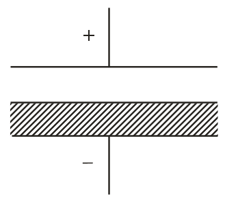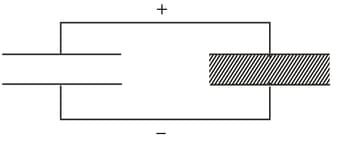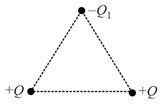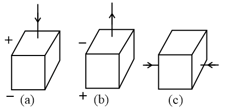L.A.Sena Solutions for Chapter: Electrostatics, Exercise 1: Exercise
L.A.Sena Physics Solutions for Exercise - L.A.Sena Solutions for Chapter: Electrostatics, Exercise 1: Exercise
Attempt the practice questions on Chapter 3: Electrostatics, Exercise 1: Exercise with hints and solutions to strengthen your understanding. A Collection of Questions and problems in Physics solutions are prepared by Experienced Embibe Experts.
Questions from L.A.Sena Solutions for Chapter: Electrostatics, Exercise 1: Exercise with Hints & Solutions
A capacitor is partially filled with a dielectric. In which of its parts is the electric field strength greater? What about the electric displacement and the energy density?

Two parallel-plate capacitors, one filled with air and the other with a dielectric, have the same geometric dimensions, are connected in parallel, and are charged to a certain potential difference. In which of the two capacitors is the electric field strength greater, in which is the electric displacement greater, in which is the energy density greater, and in which is the surface charge density on the plates greater?

Three point-like charges are positioned at the vertices of an equilateral triangles. Two are equal in magnitude and are like, while the third is opposite in sign. What should the magnitude of the third charge be so that the total interaction energy of the charges is zero?

The dielectric filling the space between the plates of a capacitor that has been charged and then disconnected from the voltage source is removed. How should the distance between the plates be changed so that the energy stored in the capacitor remains the same? Explain the origin of the change in energy.
A capacitor between whose plates there is a dielectric with a dielectric constant is connected to a DC source. How will the energy stored in the capacitor change if the dielectric is removed? Explain the cause of this change.
A parallel-plate capacitor that has been first charged and then disconnected from the voltage source is submerged in the vertical position into a liquid dielectric. How does the level of the dielectric between the plates change in the process?
A parallel-plate capacitor with vertical plates is connected to a voltage source and then submerged into a liquid dielectric. How does the level of the dielectric between the plates change in the process? Explain the change of the energy stored by the capacitor.
A cube has been cut out from a piezoelectric crystal. When the cube was compressed, it exhibited electric charges on the faces: a positive charge on the upper face and a negative charge on the lower (Figure a). When the cube was stretched, the charges were found to change their signs (Figure b). What will be the signs of the charges on these faces if pressure is applied as shown in Figure c ?

